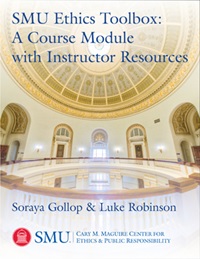Table of Contents
Introduction
What we are and (are not) doing here
Putting Ethics Into Practice
Guidelines for choosing relevant and useful cases for analysis and discussion
General requirements for case selection
Requirements for cases over the arc of a course
General instructor notes on applying ethics
Three levels of moral thinking
Method 1: Reflective equilibrium
Method 2: Arguments by Analogy
An integrated method for generating more considered moral judgments
Lesson 1: Introducing basic concepts in moral thought and reasoning
Concept 1: The moral point of view
Concept 2: Obligations (or duties)
Concept 4: Special obligations and rights
Concept 5: Permissions (options)
Concept 7: Moral agents vs. moral patients
Concept 8: Morally relevant significant factors
Lesson 2: A procedure for analyzing cases and applying ethical theories and principles
Understanding the Tools
A Brief overview of ethical theory (materials for instructors)
Kinds of ethical theories
Non-consequentialist (incl. deontological theories)
Moral Rights: Theoretical background
Claim rights, liberties, powers, and immunities
Consent, waiver, and forfeiture

